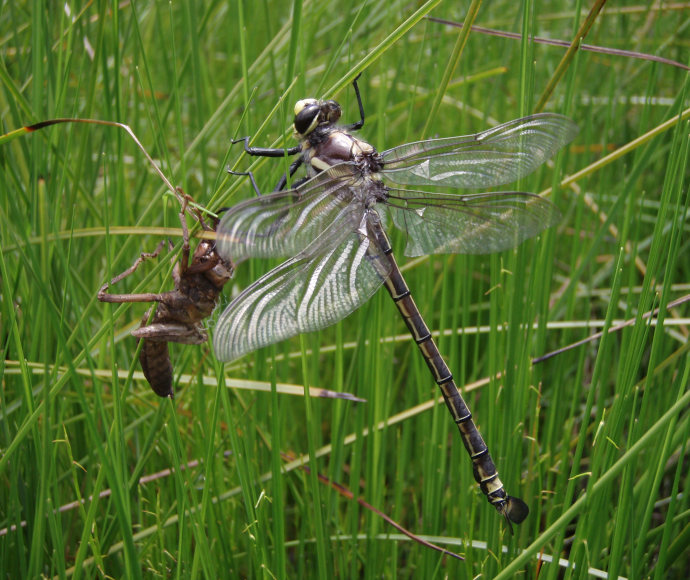Giant dragonfly (Petalura gigantea) - endangered species listing
The Scientific Committee, established by the Threatened Species Conservation Act, has made a Final Determination to list the Giant Dragonfly Petalura gigantea (Leach, 1815) as an ENDANGERED SPECIES under Schedule 1 Part 1 of the Act.
This Determination should be read in conjunction with the 2006 Determination (Endangered species listing amendment).
NSW Scientific Committee - final determination
The Scientific Committee has found that:
1. The Giant Dragonfly Petalura gigantea, is an extremely large, and unusual species of dragonfly, which is considered to be largely terrestrial throughout its life cycle. It is one of the few extant members of an ancient family, the Petaluridae.
2. Adults are distinguishable by the following combination of characteristics: huge size (male abdomen 65 - 75 mm, wingspan 110 - 120 mm, female abdomen 90 - 100 mm, wingspan 120 - 130mm); eyes widely separated; pterostigma very long, male superior anal appendages broadly foliate; female ovipositor short curved; inferior appendages short; costal side of discoidal triangle in forewing shorter than basal side; colour pattern brown-black with yellow; the yellow markings on abdominal segments 2 - 9 not forming a complete ring; segment 10 mostly yellow.
3. Larvae: early instars are grub-like and are lightly sclerotised, except in head and thorax. Final instar: fully sclerotised; length 49 - 50 mm, head rather flat above; eyes moderately large, back of head rounded; ocelli small, arranged in a triangle; reniform; labium about 9 mm long when folded, 6. 5 mm wide, rather flat, the mentum roughly rectangular with a tuft of setae each side, distal margin projecting, lobes strong with curved margins, hook very strong and thick pointed without setae. The larvae are distinguished from other species of dragonfly by an apparent inability to swim and terrestrial habits.
4. Adults emerge October - November and fly until late January, they are poor flyers and do not readily disperse. They are obligate carnivores.
5. The larval stage is unusually long, from at least 10 to 30 years. The larvae occupy permanent long chambered burrows, built under swamps. The larvae emerge from the terrestrial entrances at night and in wet weather, in search of insects and other arthropods to eat. Larvae are not known to swim and avoid open water.
6. The giant dragonfly has been recorded from permanent wetlands, both coastal and upland, from Moss Vale northwards to southern Queensland, but has not been recorded in most areas for many years. A number of sites from which old records exist are no longer wetlands. Given the spectacular and highly visible nature of the adults the sparsity of recent records is likely to be indicative of a real decline in the species' distribution.
7. The declining population size and loss or degradation of wetland habitats in which it occurs, are threats to the survival of the species. Currently, the largest and most viable population of P. gigantea is believed to occur in sphagnum swamp areas within Wingecarribee Swamp near Moss Vale. This site is currently threatened by peat mining and associated habitat disturbance.
8. In light of 6 and 7 above, the Committee is of the opinion that Petalura gigantea numbers have been reduced to such a critical level and its habitats have been so drastically reduced that it is in immediate danger of extinction.
Gazetted: 30/01/1998
